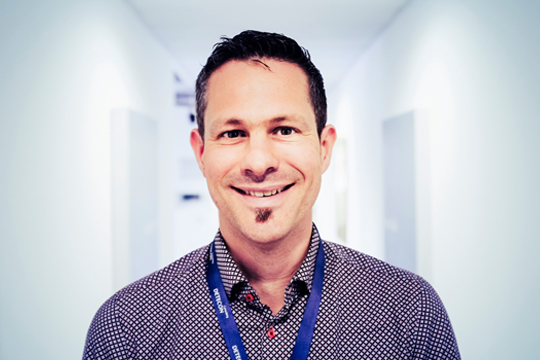Sustainable transformation requires the development of an agile mindset that, in addition to changes in management and organizational structure, also takes into account the special characteristics of companies as social systems of and for people. The latter makes it worthwhile to look at agility from a psychological perspective as well. Neuroscientific explanations of how the human brain works hold a number of surprising insights.
To be or not to be agile? This question hardly ever arises for companies nowadays. Agility has become a more or less self-evident factor for the success and sustainability of organizations. Agility, in short, is the ability of companies to adapt consciously to new circumstances. Speed plays an important role here because agility is possible only if you can react proactively and effectively to market changes in a short time. However, the high complexity of corporate structures often limits this flexibility. Companies that develop an agile mindset and integrate agility into their processes can counteract this.
Doing agile vs being agile
The success of an agile method depends on the interaction of a plethora of measures. The measures can be divided into the two main areas of doing agile and being agile. Doing agile is simply about using agile tools and methods. Being agile outlines the path to developing an agile mindset — the understanding behind agile, if you will. Change initiatives stand or fall with the latter. When companies focus on the implementation of doing agile, which takes significantly less time, experts warn against implementing agile tools and techniques without knowledge of agile mindsets and values (Rahman, 2018). Seventy percent of change initiatives in companies continue to fail — not because of the available processes, but because of the attitude of the employees (Lauer, 2019).
Even though an agile transformation is a long-term project, agility is gaining more and more adherents — and not only in software development. One possible reason besides the performance promise of agile methods: modern findings on how the human brain functions suggest that agility and agile working are a good fit with human nature. By nature, people have everything they need to be agile. They are curious and masters of adaptation. Volatility, uncertainty, complexity, and things that are not clearly assessable are, in a way, part of their everyday lives. Change, however, still smacks of danger to many, even if possibly only subconsciously.
Ultimately, people are creatures of habit. They feel most comfortable in their accustomed environment and like to use familiar methods in their work. They need time to adjust to new workflows. It is therefore important to introduce innovations as gradually as possible and to charge changes emotionally. Avoiding negative learning experiences otherwise becomes impossible.
Neuroscientific findings in agile practice
In our assessment, the agile approach in projects supports the findings from neuroscience. This can be well illustrated by the SCRUM approach, one of the most common agile approaches.
The human brain learns best and most reliably when information and content are absorbed gradually and repeated at intervals. Our daily habits, including how we prioritize tasks, make decisions, and establish positive habits, have also been shown to have a significant psychological impact on our success and sense of happiness.
These are precisely the goals of agile principles. Essentially, agility is about empowering teams to design independently processes that enable highly customer-centric solutions. The SCRUM approach with its lean processes, incremental development along regular feedback loops, and continuous learning incorporates these targets. Instead of classic project phases, the focus of SCRUM is on an iterative process with so-called “sprints,” also known as iteration in the agile framework SAFe. After the completion of each sprint, various product increments are created in sequence. These sprints are repeated until a satisfactory marketable product has been obtained (the so-called MVP, minimum viable product). After each sprint, the project phase is examined retrospectively and measures for the next sprint are initiated so that the team can interact and work more effectively, which consequently leads to faster and more efficient results. One large project is broken down into multiple small projects in which the team organizes itself independently and learns with each stage.
The SCRUM method relies entirely on a basic characteristic of humans as social beings. It is designed in its entirety to support social connections and to improve the collaboration within groups. This need for communication and interaction motivates people to shift from self-focused thinking to collaborative thinking — taking responsibility for the big picture, so to speak. Positive secondary effect: such a work organization based on human relationships strengthens both mental health and self-confidence and promotes a sense of self-efficacy, which in turn reduces anxiety and stress.
Agility, but using your brain, please
Seeing how much agile methods can mesh with the functioning of the human brain and help to unlock the full potential of employees in a way that you can describe as “natural,” one has to ask whether the growing popularity of agile is not based on the wrong reasons. The focus is often on the promise of agile methods to improve performance. The degree to which they align with human behavior receives little attention. And yet precisely this consideration should play a more central role in the decision to change to agile working. The development of an agile mindset starts even before you begin considering it.
References:
Lauer, T. (2019). Ursachen gescheiterten Unternehmenswandels. Change Management: Brundage und Erfolgsfaktoren, 49–66. https://link.springer.com/chapter/10.1007/978-3-662-59102-4_4
Rahman, A., Agrawal, A., Krishna, R., Sobran, A., and Menzies, T. (2018). “Doing” Agile versus “Being” Agile. https://www.thetalkingmachines.com/article/doing-agile-versus-being-agile-empirical-results-250-projects








